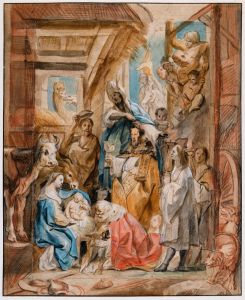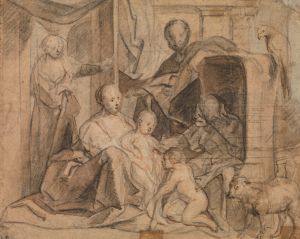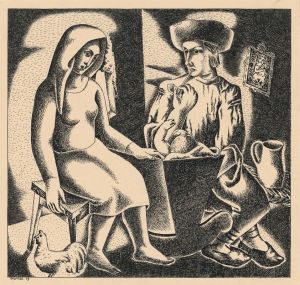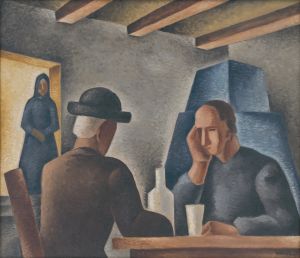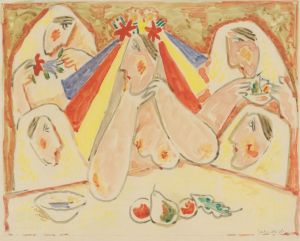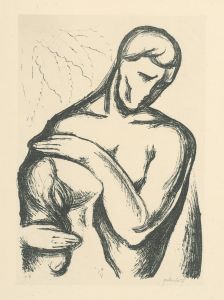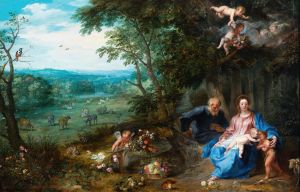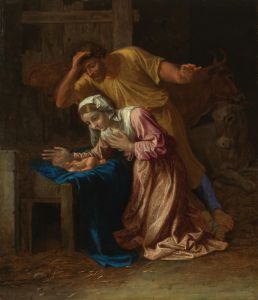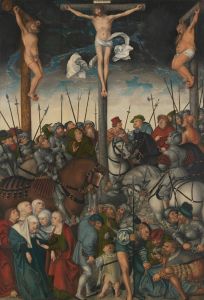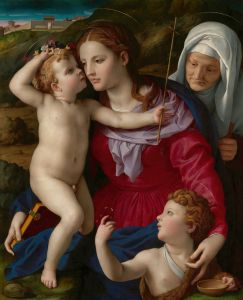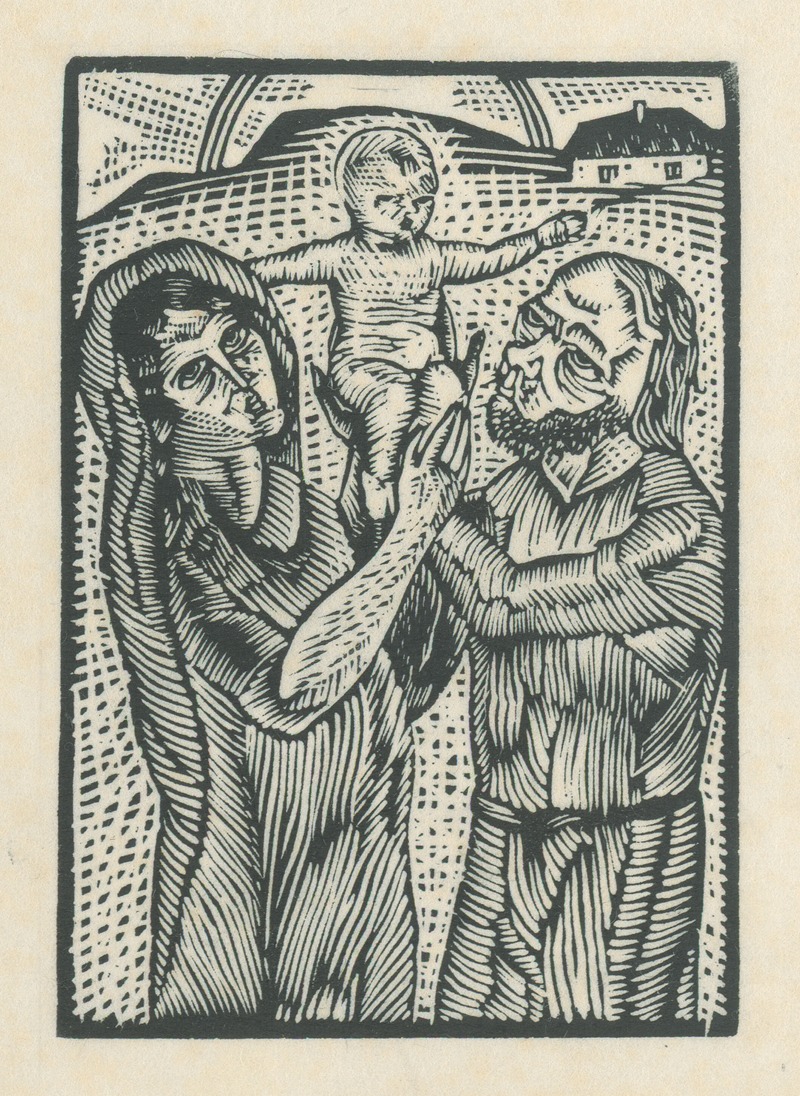
Svätá rodina
A hand-painted replica of Mikuláš Galanda’s masterpiece Svätá rodina, meticulously crafted by professional artists to capture the true essence of the original. Each piece is created with museum-quality canvas and rare mineral pigments, carefully painted by experienced artists with delicate brushstrokes and rich, layered colors to perfectly recreate the texture of the original artwork. Unlike machine-printed reproductions, this hand-painted version brings the painting to life, infused with the artist’s emotions and skill in every stroke. Whether for personal collection or home decoration, it instantly elevates the artistic atmosphere of any space.
Mikuláš Galanda was a prominent Slovak painter and graphic artist, known for his contributions to modern Slovak art in the early 20th century. He was a key figure in the development of Slovak modernism and played an influential role in shaping the artistic landscape of Slovakia during his time. One of his notable works is "Svätá rodina" (The Holy Family), which reflects his unique style and thematic interests.
"Svätá rodina" is a painting that exemplifies Galanda's approach to combining traditional themes with modernist techniques. The painting depicts the Holy Family, a common subject in Christian art, which includes the figures of the Virgin Mary, Saint Joseph, and the infant Jesus. Galanda's interpretation of this theme is characterized by his distinctive use of form and color, which aligns with the modernist movement's emphasis on abstraction and expression.
Galanda's style often incorporated elements of folk art and symbolism, which can be seen in "Svätá rodina." His use of bold lines and simplified forms reflects the influence of Cubism and Expressionism, movements that were gaining prominence in Europe during his lifetime. The painting's composition is marked by a sense of harmony and balance, achieved through Galanda's careful arrangement of shapes and his use of a muted color palette.
The context in which Galanda created "Svätá rodina" is significant, as it was a period of cultural and political change in Slovakia. The early 20th century was a time when Slovak artists were seeking to establish a national identity through art, and Galanda was at the forefront of this movement. His work often explored themes of Slovak identity, spirituality, and the human condition, and "Svätá rodina" can be seen as a reflection of these interests.
Galanda was also a member of the "Generation of 1909," a group of Slovak artists who were instrumental in introducing modernist ideas to Slovak art. This group sought to break away from the academic traditions that had dominated Slovak art and to embrace new artistic expressions that were emerging across Europe. Galanda's work, including "Svätá rodina," played a crucial role in this cultural shift.
Throughout his career, Galanda faced challenges due to the political climate of his time, including the rise of totalitarian regimes in Europe. Despite these obstacles, he remained committed to his artistic vision and continued to produce works that were both innovative and deeply rooted in Slovak culture.
"Svätá rodina" is a testament to Galanda's ability to blend traditional themes with modernist techniques, creating a work that is both timeless and contemporary. It stands as an example of his contribution to Slovak art and his influence on future generations of artists. Today, Galanda is remembered as a pioneer of Slovak modernism, and his works continue to be celebrated for their artistic and cultural significance.





